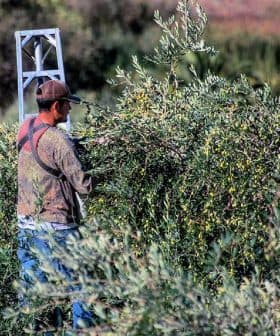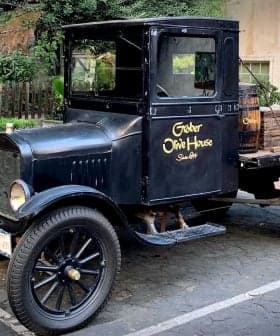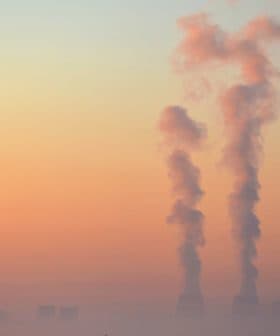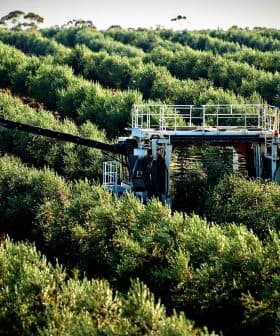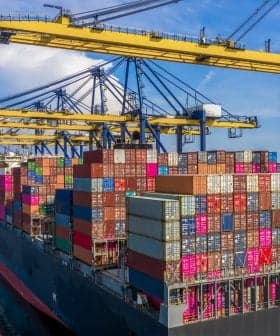Harvest Underway in California Amid Historic Wildfires, Covid Concerns
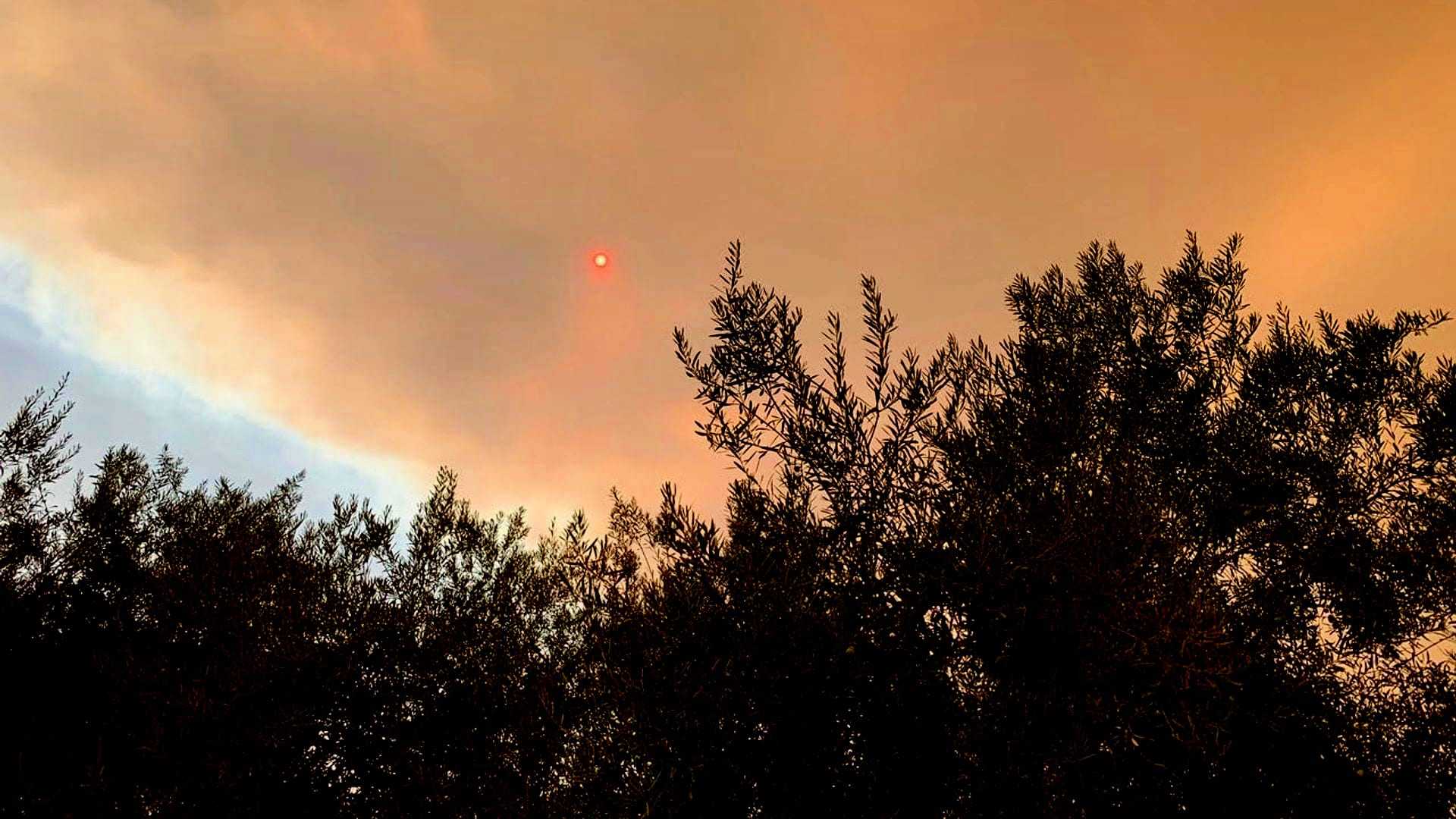
Despite record-level wildfires in California, the 2020 olive harvest is underway with producers feeling cautiously optimistic. While wildfires have burned four million acres, olive growers have largely been spared from damage due to the thick skin of olives being less susceptible to smoke taint, although concerns remain about the trend of increasingly intense fire seasons.
Even as record-level wildfires continue to rage across the Pacific Coast of the United States, the 2020 olive harvest is underway in California and many of the state’s producers are feeling cautiously optimistic.
To date, the wildfires have burned four million acres (1.6 million hectares), the state’s fire agency reports, but have largely spared California’s olive growers.
While we have had fires before, never with the frequency that we are seeing, the extent, and the duration.
None of the producers interviewed by Olive Oil Times – including the two largest in the country – reported any damage from fire or smoke taint to their crop this year.
“As unprecedented as the August and September fires in California have been, we are thankful to have had very few reports of fire damage to orchards, buildings, mill equipment or storage facilities,” Patricia King, the executive director of the California Olive Oil Council (COOC), told Olive Oil Times.
See Also:2020 Harvest UpdatesKing added that olives are not as susceptible to smoke taint as grapes, in part due to the waxier and thicker skin of the fruits, so smoke impacting the quality of the harvest is also unlikely.
“The UC Davis Olive Center processed smoke tainted olive fruit in 2017 and found the oil was defect-free,” she said. “Similar observations have been reported by other growers and producers in California, Australia and Chile in past years although very rarely, a smoky flavor was detected in the oil.”
In the 2020/21 crop year, the United States is expected to produce 16,500 tons of olive oil, almost all of which will come from California, according to Jorge Pena, the CEO of Innoliva in the U.S. and an expert on the North American market.
The estimate, which puts this year’s production a bit higher than the roughly 16,000 tons that have been produced in each of the past four years, is consistent with anecdotal evidence from many of the state’s growers, many of whom said they are expecting lower harvests than last year.
The COOC is still waiting to hear from more producers before releasing its official harvest estimate for 2020.
“This is a down year, so we do not anticipate the tonnage we saw last harvest, but our fruit sizing is coming along nicely so oil yields may be better than we originally anticipated,” Michael Fox, the CEO of California Olive Ranch, the largest producer in the U.S., told Olive Oil Times.
He added that none of the company’s own olive groves or suppliers’ olive groves had been greatly impacted by the wildfires and smoke.
“We also take precautionary measures as we harvest our olives,” Fox said. “The machines used to extract the olive fruit from the trees have large fans to remove any ash that may remain on the leaves or olive fruit. The olive fruit then passes through an air blower on the harvester itself, and the fruit is washed as it enters the mill, further removing any remaining ash.”
While the vast majority of California’s producers are not overly concerned about damage caused by smoke to the trees or drupes this year, there is some concern about the trend of increasingly intense fire seasons in the state.

Fires burning in the mountains in north Los Angeles
According to Cal Fire, 2020 has been the worst fire season on record, with more than double the amount of acres burning this year than did in the previous worst year on record – 2018.
“The air has been full of smoke for some time, we have never seen it like this before for the duration that we’ve had,” Giulio Zavolta, the co-founder of Olivaia Olives in Lindsay, California, told Olive Oil Times.
Zavolta grows olives in the foothills of the Sierra Nevada, about 155 miles (250 kilometers) north of Los Angeles. In spite of a number of active wildfires burning in the mountains just to the west of his groves, Zavolta reported that no damage has been done. However, he remains wary of the long-term implications of producing olive oil in an increasingly fire-prone region.
“I have recently been on a panel discussion organized by the COOC about the risk of smoked taint,” Zavolta said. “I believe the consensus was that we really don’t know as we don’t have historical data to rely on.”
“While we have had fires before, never with the frequency that we are seeing, the extent, and the duration,” he added. “It looks like we are charting onto new territory and as an industry we should be communicating and working together to see how we could minimize any potential risk to the quality of the oil.”
We have farmed on this hill for nearly 50 years and no one harvest has been identical to a harvest that came before. This is another challenge to be overcome and we will. It is just that simple and that is my mindset everyday.
While wildfires have engulfed headlines in the state, it is another natural disaster that has taken up producers’ attention more recently, as many of them prepare to begin harvesting in the coming weeks: Covid-19.
In Templeton, which sits nearly equidistant between Los Angeles and San Francisco in the California’s Central Valley, Karen Roach, the owner of Olea Farm, said that her olive harvest is about to get underway.
“We are working closely with our contracted labor company ensuring they are taking the correct steps to keep their workers safe and protected for the upcoming harvest,” she told Olive Oil Times.
“Some of the measures we will be implementing are plenty of wash stations and hand sanitizer stations, [and] face masks for all workers,” she added. “[We are] working the crews in smaller groups and spreading the groups out within the orchards to achieve [social distancing].”
Other producers interviewed by Olive Oil Times echoed the sentiments of Roach, emphasizing their plans to socially distance and increase the sanitizing regime of milling and harvesting equipment.
While the vast majority of producers reported having smaller yields this year than last – as many of their groves enter off-years – there remained a sense of optimism that just like the famously resilient and durable olive trees, the region’s olive farmers would get through this year’s obstacles as well.
“This year will present additional and significant challenges,” Roach said. “Currently we are all being forced to become more creative and spontaneous in our procedures and restrictions but one thing is for sure; it is the ability of mankind to step up to the plate, figure things out, share, help and assist [each other] where needed.”
About 220 miles (355 kilometers) north of California’s border with Oregon, the state’s largest olive oil producer – Durant Olive Mill – is also readying for the harvest.
Oregon has also had one of its worst wildfire seasons on record this summer, but Paul Durant told Olive Oil Times that his groves in the northwest of the state have been unaffected.
As Durant prepares to dole out NK95 masks and personal protective equipment to the olive pickers, who are just about to head into the groves and begin the harvest, he muses that 2020 has been a bit like growing olives at this northerly latitude: full of challenges to overcome.
“Actually, I feel pretty good,” Durant said. “We have farmed on this hill for nearly 50 years and no one harvest has been identical to a harvest that came before. This is another challenge to be overcome and we will. It is just that simple and that is my mindset everyday.”


